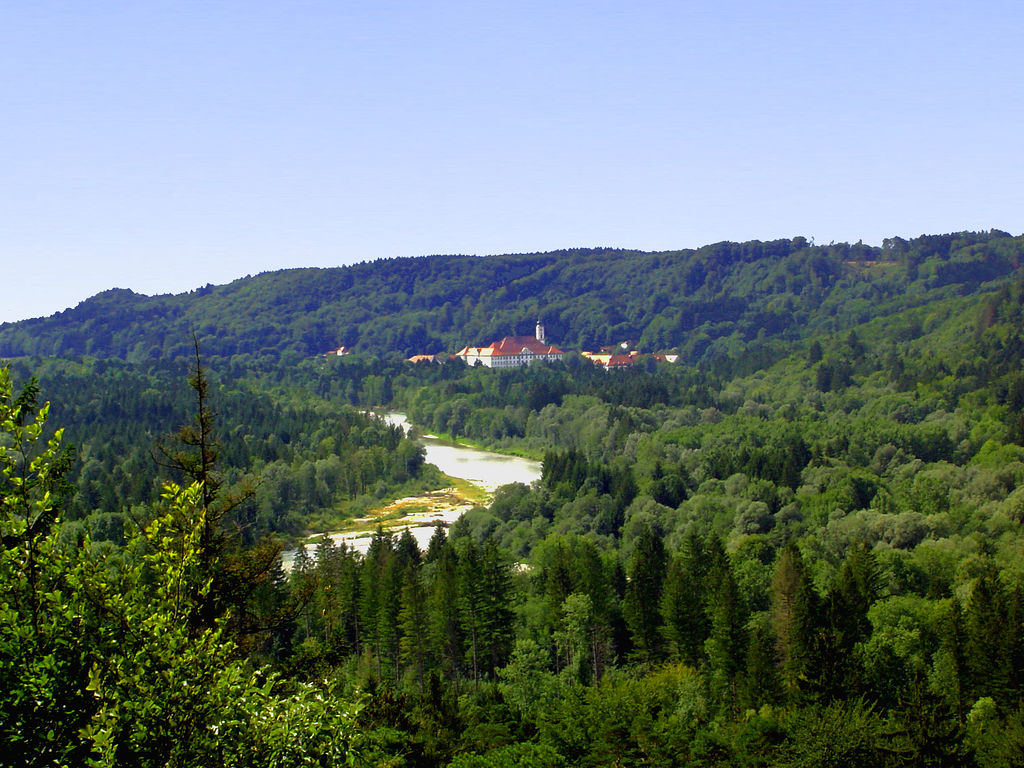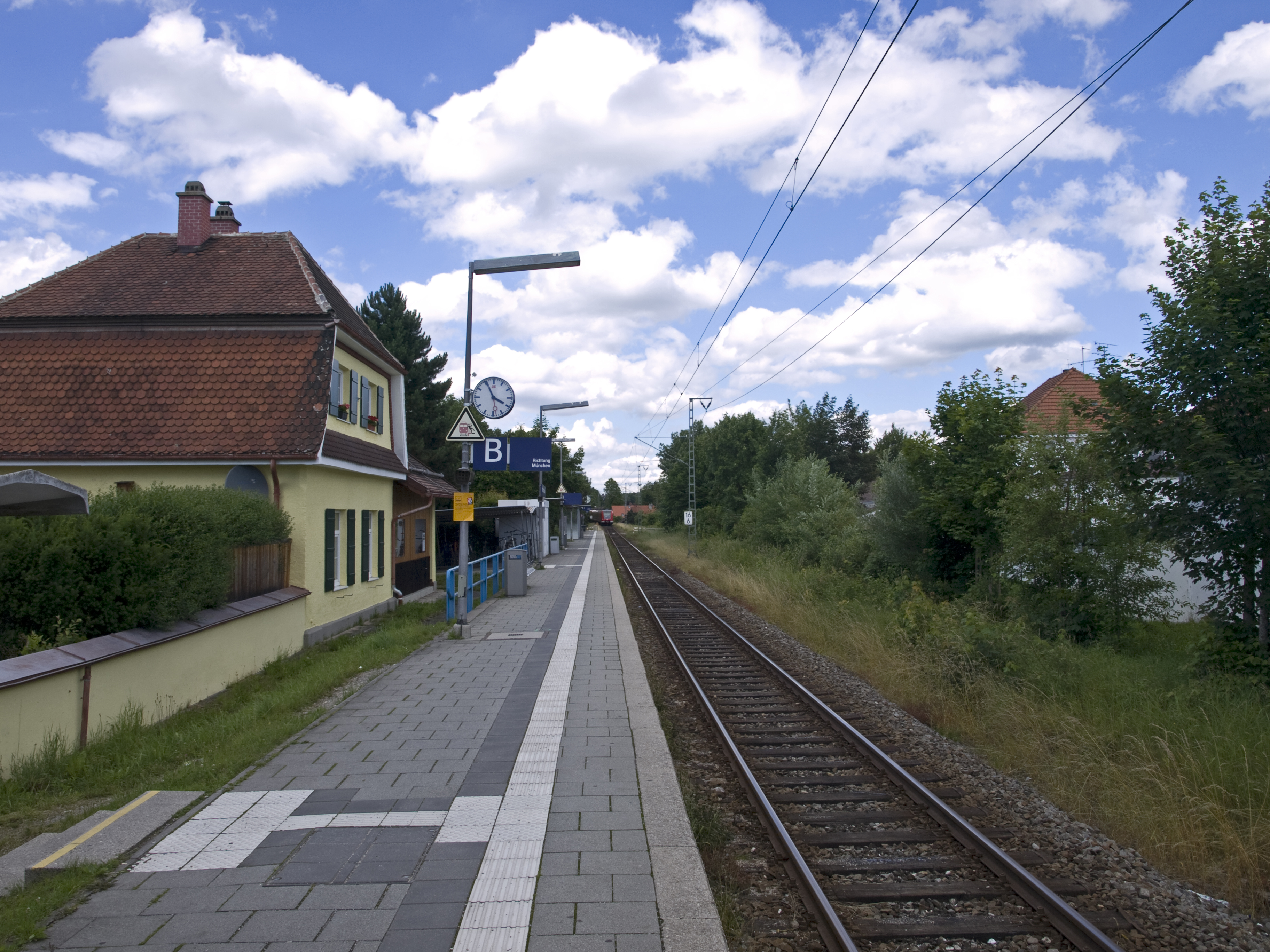|
Schäftlarn
Schäftlarn is a municipality in the district of Munich in Bavaria in Germany. It consists of the villages Ebenhausen, Hohenschäftlarn, Kloster Schäftlarn, Neufahrn and Zell. The river Isar runs through it. A human settlement with the name "Schäftlarn" does not exist. The most famous building complex is Schäftlarn Abbey (Kloster). History The name Schäftlarn was officially recorded as a municipality in 1873. But the roots of the place go back much farther. Schäftlarn Abbey was founded in the year 762 as a monastery for Benedictine monks. The village of Hohenschäftlarn is first mentioned in documents 778 and belonged to the abbey. The monastery was rebuilt between 1702 and 1760, and the church of St. Georg in the village of Hohenschäftlarn in 1729/30. During the secularisation of Bavaria in 1803 the monastery was dissolved. In 1818 the municipality of Schäftlarn was first established as an independent political entity. In 1866 Ludwig I of Bavaria re-established the monas ... [...More Info...] [...Related Items...] OR: [Wikipedia] [Google] [Baidu] |
Schäftlarn Abbey
Schäftlarn Abbey (Kloster Schäftlarn) is a Order of St. Benedict, Benedictine monastery on the Isar in Schäftlarn, south of Munich in Bavaria, Germany. History The monastery was founded in 762 by Waldrich, Bishop of Passau, Waltrich, a priest of noble family, on his own land. The monastery was dedicated to Saint Denis of Paris, Saint Dionysius of Paris. The first monks came from the cathedral monastery of Freising Cathedral, Saint Mary and Corbinian in Freising. In the tenth century the monastery was turned into a house for lay canons. During the next two centuries the monastery grew as a result of various gifts and endowments (among them the estates of Schwabing and Hesselohe). In 955 the monastery was destroyed by the Hungarians who were then making marauding incursions into Germany.Löffler, Kleme ... [...More Info...] [...Related Items...] OR: [Wikipedia] [Google] [Baidu] |
Isar Valley Railway
The Isar River Valley Railway (german: Isartalbahn) is a standard gauge and electrified railway in the German state of Bavaria. Originally it was 51.1 km long, running from Munich South station to and was built from 1891 to 1898 in sections by the Lokalbahn AG company (LAG). The section from Munich South to Wolfratshausen was classified as a main line, while the section from Wolfratshausen to Bichl was classified as a branch line. In 1900, the LAG electrified the section from the ''Isartalbahnhof'' (the station for the Isar River Valley Railway in Munich) to Höllriegelskreuth for suburban services at 580 volts DC. In 1938, the LAG and, with it, the Isar Valley Railway were nationalised. After the Second World War, Deutsche Bundesbahn converted the electrification to 15 kV AC (16 ⅔ Hz); this was completed in 1955 and extended to Wolfratshausen in 1960. The northern section from Munich South to Grosshesselohe Isartal station and the southern section from Wolfratshausen to B ... [...More Info...] [...Related Items...] OR: [Wikipedia] [Google] [Baidu] |
Munich (district)
Munich (german: Landkreis München) is a ''Landkreis'' (district) in Bavaria, Germany. It borders (from the north and clockwise) the districts of Dachau, Freising, Erding, Ebersberg, Rosenheim, Miesbach, Bad Tölz-Wolfratshausen, Starnberg, Fürstenfeldbruck, and almost encircles (except for the west and northwest sides) district-free city Munich itself, which is the district seat. History The history of the region is connected to the city of Munich. The district was established in 1852 and underwent several changes due to the ongoing incorporation of municipalities into the city of Munich. In 1972 the constant shrinking of the district was compensated by adding nine municipalities from the former district of Wolfratshausen. Geography The district is located in the east and the south of the city Munich, mostly covering the moraine plain around Munich. In the south of the district the foothills of the Alps start, which also contain the highest elevation of the district, two hi ... [...More Info...] [...Related Items...] OR: [Wikipedia] [Google] [Baidu] |
Bayerisches Landesamt Für Statistik
The statistical offices of the German states (German language, German: ''Statistische Landesämter'') carry out the task of collecting official statistics in Germany together and in cooperation with the Federal Statistical Office of Germany, Federal Statistical Office. The implementation of statistics according to Article 83 of the Basic Law for the Federal Republic of Germany, constitution is executed at state level. The Bundestag, federal government has, under Article 73 (1) 11. of the constitution, the exclusive legislation for the "statistics for federal purposes." There are 14 statistical offices for the States of Germany, 16 states: See also * Federal Statistical Office of Germany References {{Reflist National statistical services, Germany Lists of organisations based in Germany, Statistical offices Official statistics, Germany ... [...More Info...] [...Related Items...] OR: [Wikipedia] [Google] [Baidu] |
Municipalities Of Germany
MunicipalitiesCountry Compendium. A companion to the English Style Guide European Commission, May 2021, pages 58–59. (german: Gemeinden, ) are the lowest level of official territorial division in . This can be the second, third, fourth or fifth level of territorial division, depending on the status of the municipality and the '''' (federal state) it ... [...More Info...] [...Related Items...] OR: [Wikipedia] [Google] [Baidu] |
Bavaria
Bavaria ( ; ), officially the Free State of Bavaria (german: Freistaat Bayern, link=no ), is a state in the south-east of Germany. With an area of , Bavaria is the largest German state by land area, comprising roughly a fifth of the total land area of Germany. With over 13 million inhabitants, it is second in population only to North Rhine-Westphalia, but due to its large size its population density is below the German average. Bavaria's main cities are Munich (its capital and largest city and also the third largest city in Germany), Nuremberg, and Augsburg. The history of Bavaria includes its earliest settlement by Iron Age Celtic tribes, followed by the conquests of the Roman Empire in the 1st century BC, when the territory was incorporated into the provinces of Raetia and Noricum. It became the Duchy of Bavaria (a stem duchy) in the 6th century AD following the collapse of the Western Roman Empire. It was later incorporated into the Holy Roman Empire, became an ind ... [...More Info...] [...Related Items...] OR: [Wikipedia] [Google] [Baidu] |
Germany
Germany,, officially the Federal Republic of Germany, is a country in Central Europe. It is the second most populous country in Europe after Russia, and the most populous member state of the European Union. Germany is situated between the Baltic and North seas to the north, and the Alps to the south; it covers an area of , with a population of almost 84 million within its 16 constituent states. Germany borders Denmark to the north, Poland and the Czech Republic to the east, Austria and Switzerland to the south, and France, Luxembourg, Belgium, and the Netherlands to the west. The nation's capital and most populous city is Berlin and its financial centre is Frankfurt; the largest urban area is the Ruhr. Various Germanic tribes have inhabited the northern parts of modern Germany since classical antiquity. A region named Germania was documented before AD 100. In 962, the Kingdom of Germany formed the bulk of the Holy Roman Empire. During the 16th ce ... [...More Info...] [...Related Items...] OR: [Wikipedia] [Google] [Baidu] |
Isar
The Isar is a river in Tyrol, Austria, and Bavaria, Germany, which is not navigable for watercraft above raft size. Its source is in the Karwendel range of the Alps in Tyrol; it enters Germany near Mittenwald and flows through Bad Tölz, Munich, and Landshut before reaching the Danube near Deggendorf. At in length, it is the fourth largest river in Bavaria, after the Danube, Inn, and Main. It is Germany's second most important tributary of the Danube after the Inn. Etymology One theory is that the name ''Isar'' comes from the hypothetical Indo-European root ''*es'' or ''*is'', which generally meant "flowing water" and later turned into a word with a meaning narrowed to frozen water (hence English ''ice'', german: Eis) in Proto-Germanic; the name itself is mentioned for the first time in 763 as ''Isura''. An older theory is that it comes from Celtic words and the name ''Isar'' is a construction of the Celtic stems ''ys'' "fast, torrential" and ''ura'' "water, river". Accordin ... [...More Info...] [...Related Items...] OR: [Wikipedia] [Google] [Baidu] |
Benedictine
, image = Medalla San Benito.PNG , caption = Design on the obverse side of the Saint Benedict Medal , abbreviation = OSB , formation = , motto = (English: 'Pray and Work') , founder = Benedict of Nursia , founding_location = Subiaco Abbey , type = Catholic religious order , headquarters = Sant'Anselmo all'Aventino , num_members = 6,802 (3,419 priests) as of 2020 , leader_title = Abbot Primate , leader_name = Gregory Polan, OSB , main_organ = Benedictine Confederation , parent_organization = Catholic Church , website = The Benedictines, officially the Order of Saint Benedict ( la, Ordo Sancti Benedicti, abbreviated as OSB), are a monastic religious order of the Catholic Church following the Rule of Saint Benedict. They are also sometimes called the Black Monks, in reference to the colour of their religious habits. They ... [...More Info...] [...Related Items...] OR: [Wikipedia] [Google] [Baidu] |
Ludwig I Of Bavaria
en, Louis Charles Augustus , image = Joseph Karl Stieler - King Ludwig I in his Coronation Robes - WGA21796.jpg , caption = Portrait by Joseph Stieler, 1825 , succession=King of Bavaria , reign = , coronation = , predecessor = Maximilian I Joseph , successor = Maximilian II , birth_name = , birth_date = , birth_place =Strasbourg, Kingdom of France , death_date = , death_place =Nice, Second French Empire , spouse =Therese of Saxe-Hildburghausen , issue =Maximilian II of Bavaria Mathilde Caroline, Grand Duchess of Hesse and by RhineOtto of GreecePrincess TheodelindeLuitpold, Prince Regent of Bavaria Adelgunde, Duchess of Modena Archduchess Hildegard of Austria Princess Alexandra Prince Adalbert , house =Wittelsbach , father =Maximilian I Joseph of Bavaria , mother =Princess Augusta Wilhelmine of Hesse-Darmstadt , religion =Roman Catholicism , burial_place ... [...More Info...] [...Related Items...] OR: [Wikipedia] [Google] [Baidu] |


